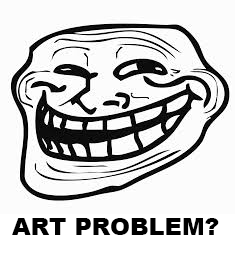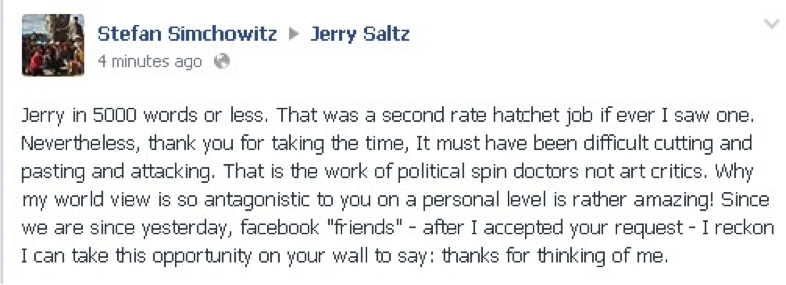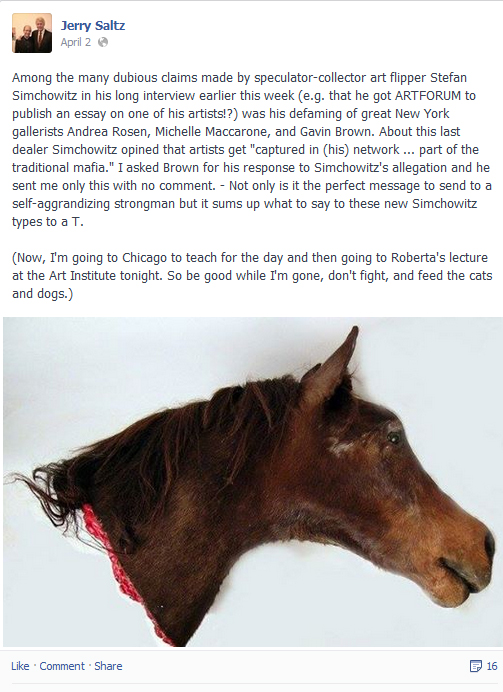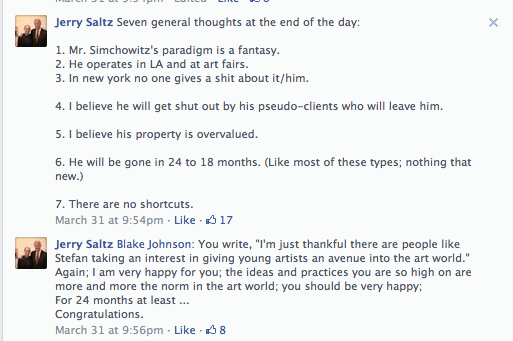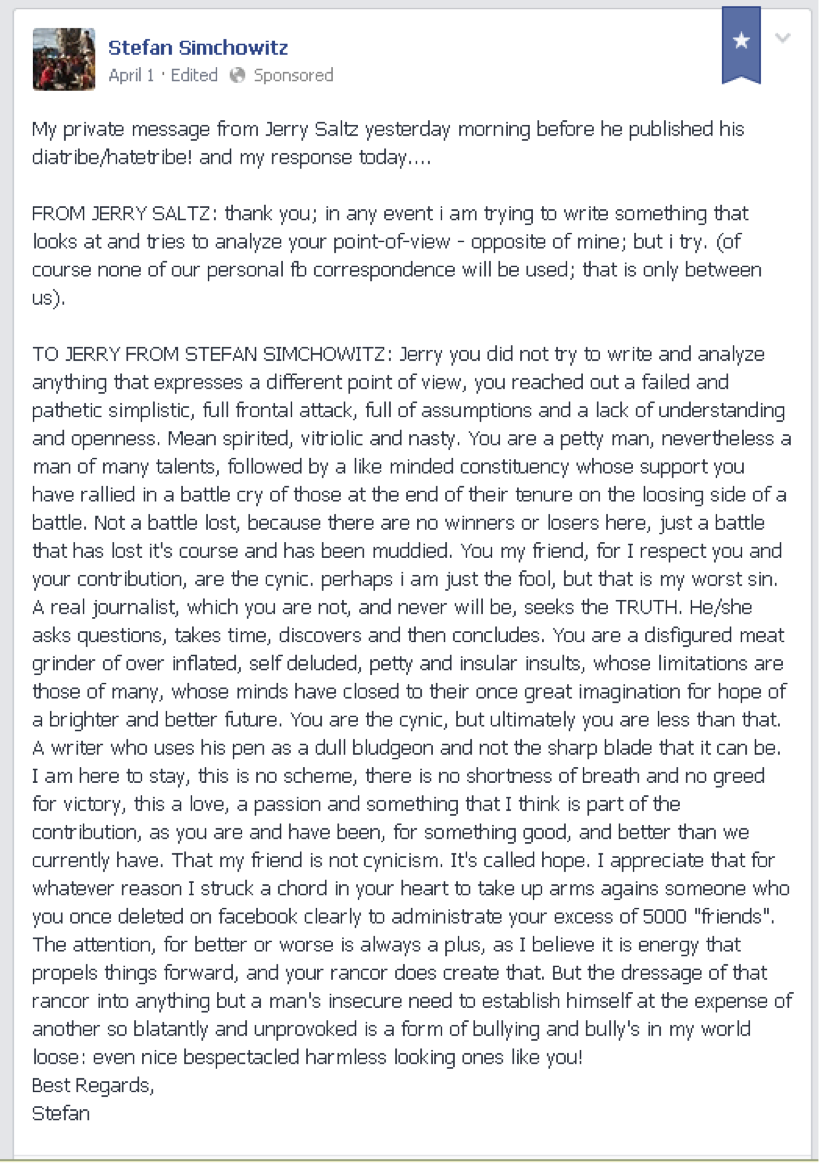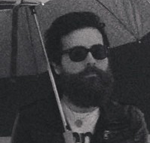
It’s March 31, 2014, #JerrySaltz is #trending and I am not sure you get the magnitude of this moment.
Saltz is an art critic. Who cares about critics? Who cares about the small vacuum of social spaces within the cubed white gallery/museum? Saltz certainly does, and his Vulture piece criticizing “post-Internet” collector and “cultural entrepreneur” Stefan Simchowitz proves it. Simchowitz, profiled as an “art flipper” by Bloomberg, has the knack for collecting and promoting emerging artists. In an interview for Artspace, he describes his success and process as directly related to a new form of spectatorship and criticism facilitated by our networked, social environment. He explains: “More people see the art, more people can consume it and engage with it, and, more importantly, many more people have started taking and sharing photos and describing what they’re seeing. These posts aren’t in a descriptive format like a critical review, but they’re microbursts of cultural criticism that can balloon to be seen by a multitude of people.”
For Saltz, Simchowitz is the Mafia (media) Don of a “new cynicism” who embodies “everything that is gross.” Simchowitz’s self-promotion, confidence, success, money, and critique of a “traditional” art system are all signs of being “#delusional #deranged #absolutist”[1] and worse, the artists he supports are “mediocrities” at best. Saltz, Senior Art Critic for New York Magazine, has in the past few years raised his critical “klout” by engaging with social media networks and authoring provocative essays on contemporary artists, or the “generation blank” who are members of the “International School of Silly Art.” To his credit, Saltz is certainly on top of these emerging artists, and there is indeed a trend of #fear of intellectual depth,[2] but he appears misguided as to the origins of this conditioning -choosing instead to ignore the cultural context of his critique.
With regard to Simchowitz, Saltz is mostly referring to the interview on Artspace, but I don’t entirely care about the art market or who has a better eye for painting (a medium Saltz obsessively returns to throughout a conversation less about painting[3] and more about the greater cultural implications of this whole “post-Internet” thing). What I care about is the fact that I am seeing the war of words occur on my dash and I am getting reminders to check out Saltz’s Twitter for all the updated barbs. It’s all so voyeuristic; it’s all so theater; it’s all so masturbatory.
Simchowitz, on Facebook, responded to Saltz’s post, deriding the Vulture article as a “hit piece.” This response is deleted at some point (and reposted; but I, like all good post-Internetizens had already decided to screenshot it for these purposes). He responds later with another article and even posts a photo-response of him and his child (I assume). He captions: “Jerry this is my counter to you…and all your friends…enjoy your trip to Chicago!” and continues defending himself via comments.
Here are a few screenshots (not in order of post / response):
Here’s the YouTube video:
While deriding Simchowitz as having “a knack for hype,” what this spectacle displays is Saltz’s own mastery of the post-internet, best defined by Gene McHugh as that stage in the digital network when the online-offline dichotomy has all but disappeared, or at least become hazier.[4] Simply put, previous to a post-internet, news was made in the “offline” and made its way from traditional outlets to the net, i.e. “online.” Now, however, Saltz’s piece becomes blockbuster material on the net, and it extends outside the screen -and he knows it. I can’t get away from Saltz, and he can’t get away from me. McHugh writes:
…any hope for the Internet to make things easier, to reduce the anxiety of my existence, was simply over—it failed—and it was just another thing to deal with. What we mean when we say “Internet” became not a thing in the world to escape into, but rather the world one sought escape from…sigh…It became the place where business was conducted, and bills were paid. It became the place where people tracked you down.[5]
Saltz hashtags like a pro; and he handles his bombs, and flame-bait like an expert troll.[6] He throws in critiques within his initial link-post, and he even “likes” the response-post of his enemy. He also suddenly becomes a thread moderator, keeping his page clean, and “allows” the users to interact and have their say -giving the demos a sense of power –then he throws in a severed horse head. Saltz set the show up from the start by including examples of Simchowitz’s Facebook posts and photos as content to be criticized within the Vulture article. He writes: “On March 4, his Facebook status update began, ‘I LOVE LUCIEN. I LOVE OSCAR. I LOVE PARKER. AND SO DOES THE MARKET.’ In case you’re wondering where this kind of hubris comes from, another one of his Facebook updates with a picture of him sitting on a chair that sported an enormous scrotum read only ‘You need big balls in the art business nowdays [sic].’”
This use of the archive is a familiar strategy to us post-Internetters. We want to know everything, and we will use it all against you if we can. And who is Simchowitz but his social-networking profile, that ultimate identifier of identity in 2014? Why shouldn’t his photos be fodder for a larger critique on a new generation of artists? Who is the public-Simchowitz and who is the private-Simchowitz? Saltz’s article is less about a critical dialog with the artists Simchowitz supports and more about Simchowitz’s network. Friending Simchowitz was part of Saltz’s research, as McHugh lamented, he was “tracked down” here for the sake of art criticism. Is this post-Internet (art) criticism?
Saltz had requested friendship with Simchowitz first just days before the Vulture piece. Simchowitz explains in a Facebook comment:
“Why my world view is so antagonistic to you on a personal level is rather amazing! Since we are since yesterday, facebook “friends” – after I accepted your request – I reckon I can take this opportunity on your wall to say: thanks for thinking of me.”
Clearly, while Saltz defines himself as opposed to Parker Ito, Jon Rafman, and Petra Cortright, and positions himself somewhere within traditional art-media, he is also participating in the vernacular and roles of those deeply immersed in digital social spaces, with their rules and expectations (or lack thereof). He’s a h8ter and a narcissist but he has a lot of important things to say and he’s bypassing Art Forum, and Art News, and whatever other boring, costly print media to do it. But, so do Simchowitz, Ito, Rafman and Cortright, who, more than Saltz the performer, are able to sincerely, and expertly wield the compressed new-internationalism of a global condition, and create work which represents the inherent qualities of all the aforementioned issues: contradiction, consumerism, disembodiment, virtuality, identity, trans-geography, and friendship (btw, I’m so sick of Brad Troemel knowing all my friends).
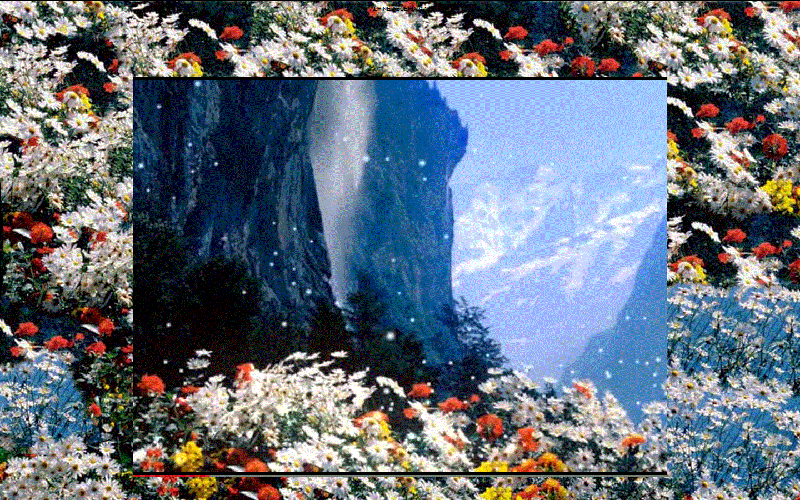

http://www.parkerito.com/self_portraits/statement.html
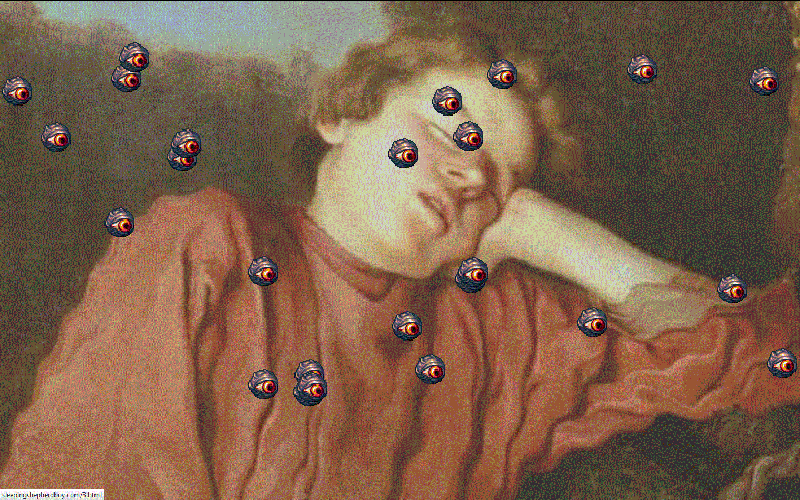
It’s unfortunate that Saltz is not engaging critically with the work of this age (calling Ito a “painter” is wrong in its exclusion), instead choosing to believe that this is all just some fad:
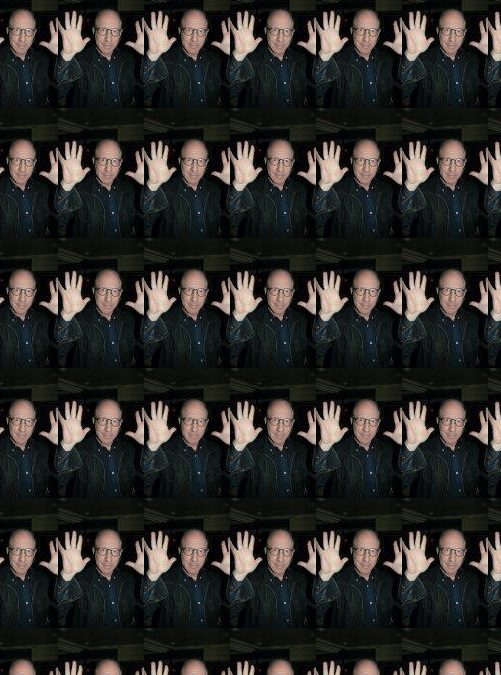
Saltz is a bellwether of institutionally supported critics to come, joining the ranks of all the non-affiliated public trolls of the “social web.” In a 2006 interview regarding a crisis in art criticism, Raphael Rubinstein of Art in America explained “that the art world is so global now, and to really know it you need to travel constantly, and museum curators have the budget from their institutions to travel around the world and go to all the 200 biennials around the world. And critics really can’t do that. And so the critic is operating with less and less information.”[7] But, perhaps the new crisis, eight years later, is one of TMI. Should artists now concern themselves with defriending the critic?
[1] Saltz’s hashtags
[3] Painter Oscar Murillo is an easy target and more often, Saltz avoids any meaningful critical dialog of those artists who broke out of the “digital” pack, Jon Rafman, Petra Cortright, et al.
[4] See my previous Digital America articles where I make similar claims. https://www.digitalamerica.org/dead-mans-bell/
[5] McHugh, Gene. Post Internet (blog). Accessed March 5, 2013. http://122909a.com/. (link no longer accessible).
[6] “Troll” and “flamer” intermingle. The behavior of Saltz form of criticism and his use of other’s profile information to enflame can only be described as “trollish” in nature, and outside the topic the art criticism. For an interesting example of the troll as an institutionally and commercially supported entity see David Golumbia’s “Commercial Trolling: Social Media and the Corporate Deformation of Democracy,” Uncomputing Blog, posted February 13, 2014. http://www.uncomputing.org/?p=313
[7] “Is art criticism in crisis? Raphael Rubinstein”, The Book Show, July 26, 2006. http://www.abc.net.au/radionational/programs/bookshow/is-art-criticism-in-crisis-raphael-rubinstein/3323220#transcript

